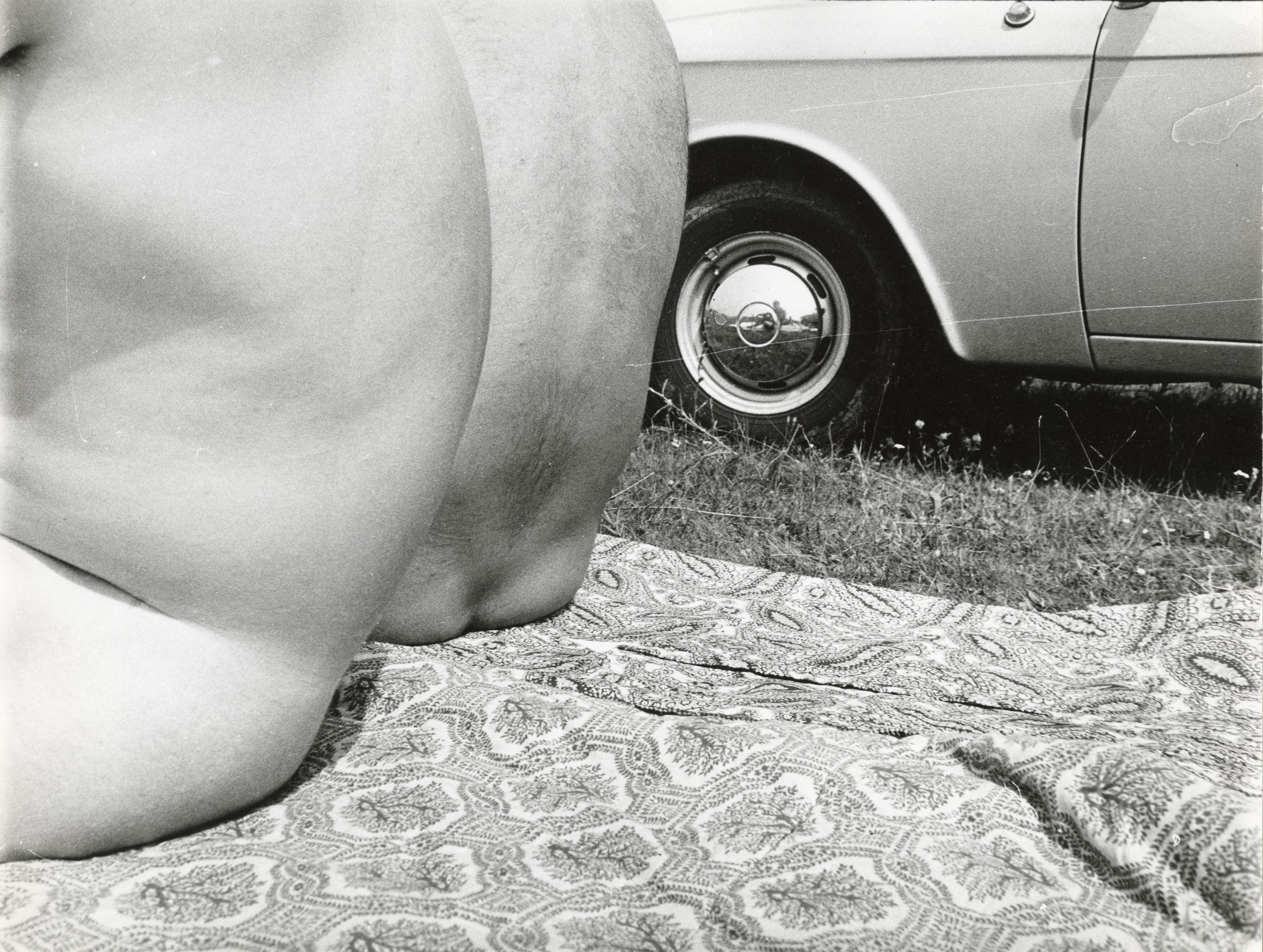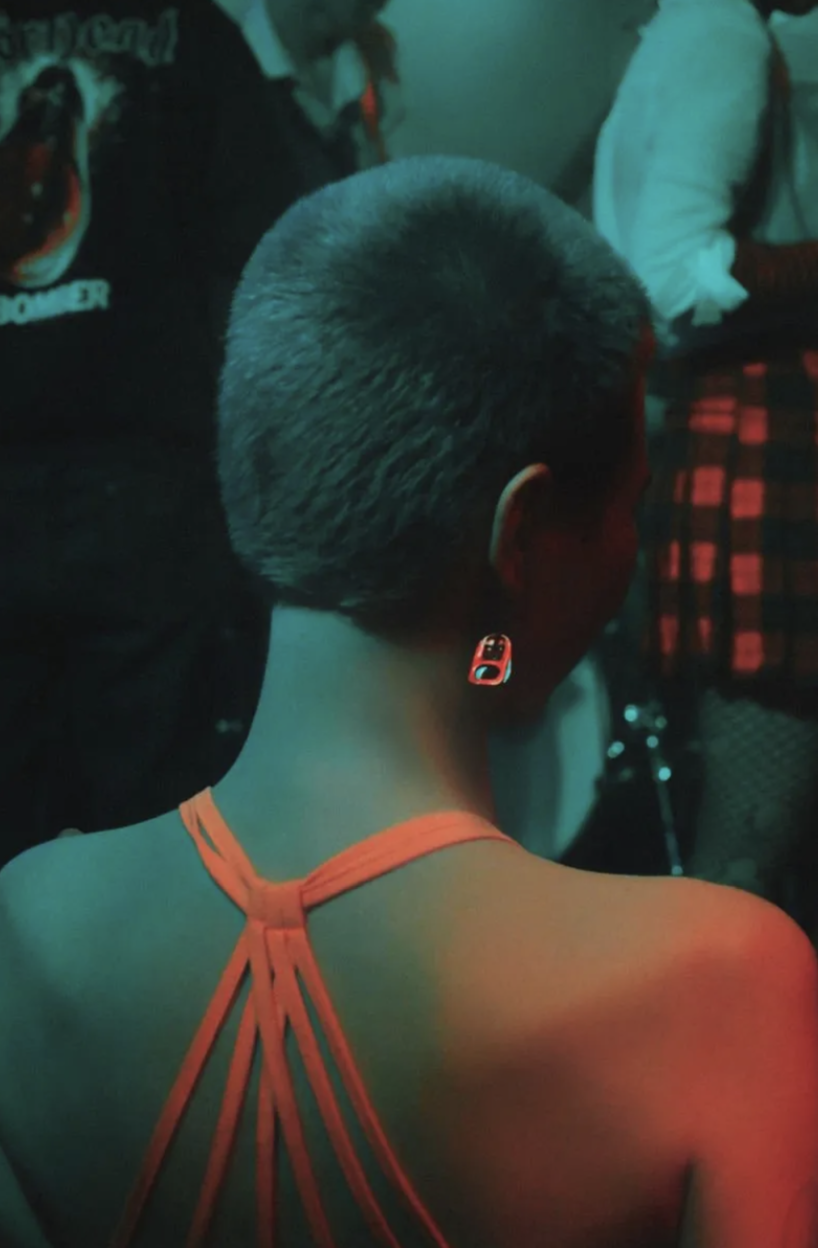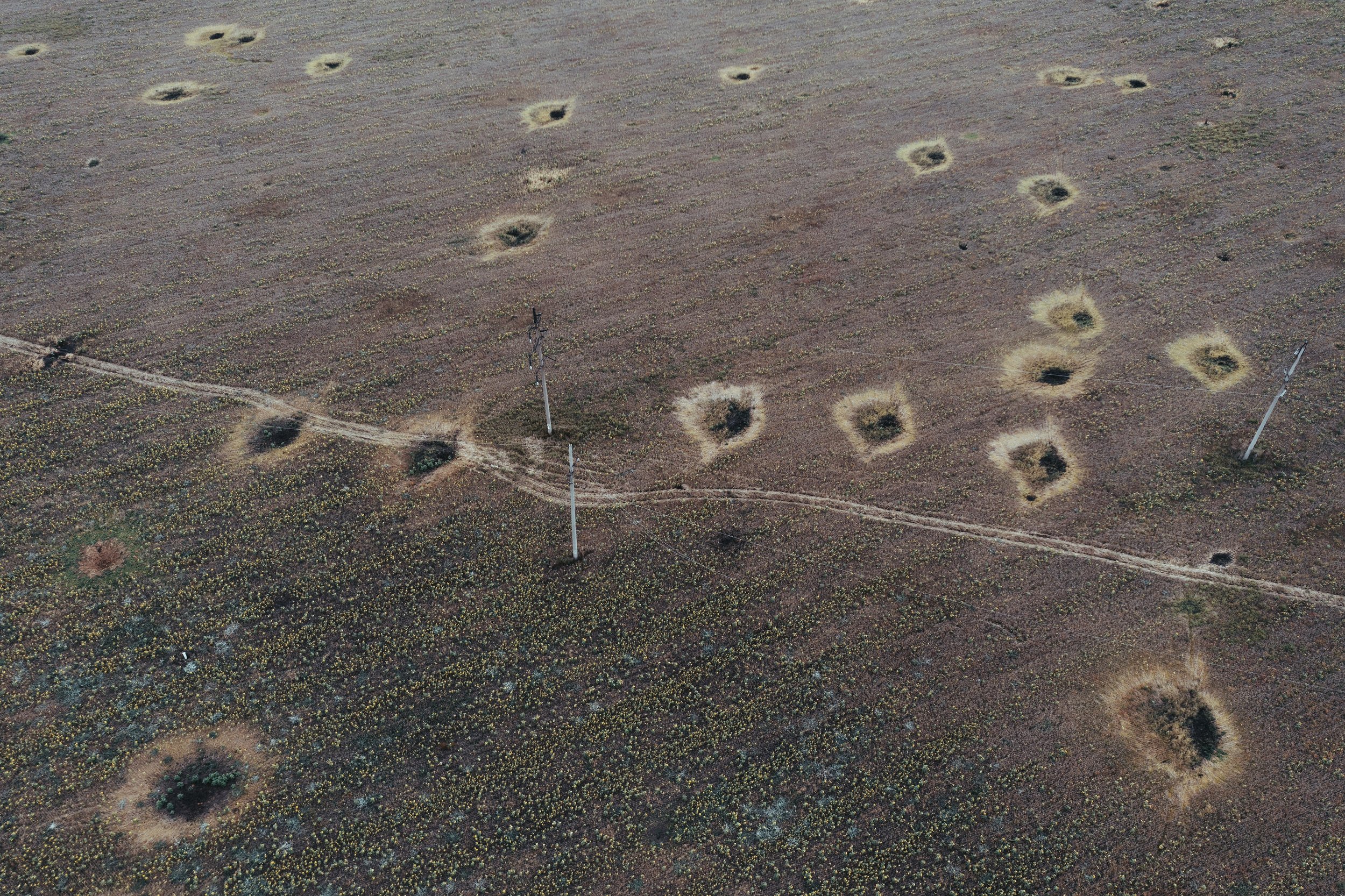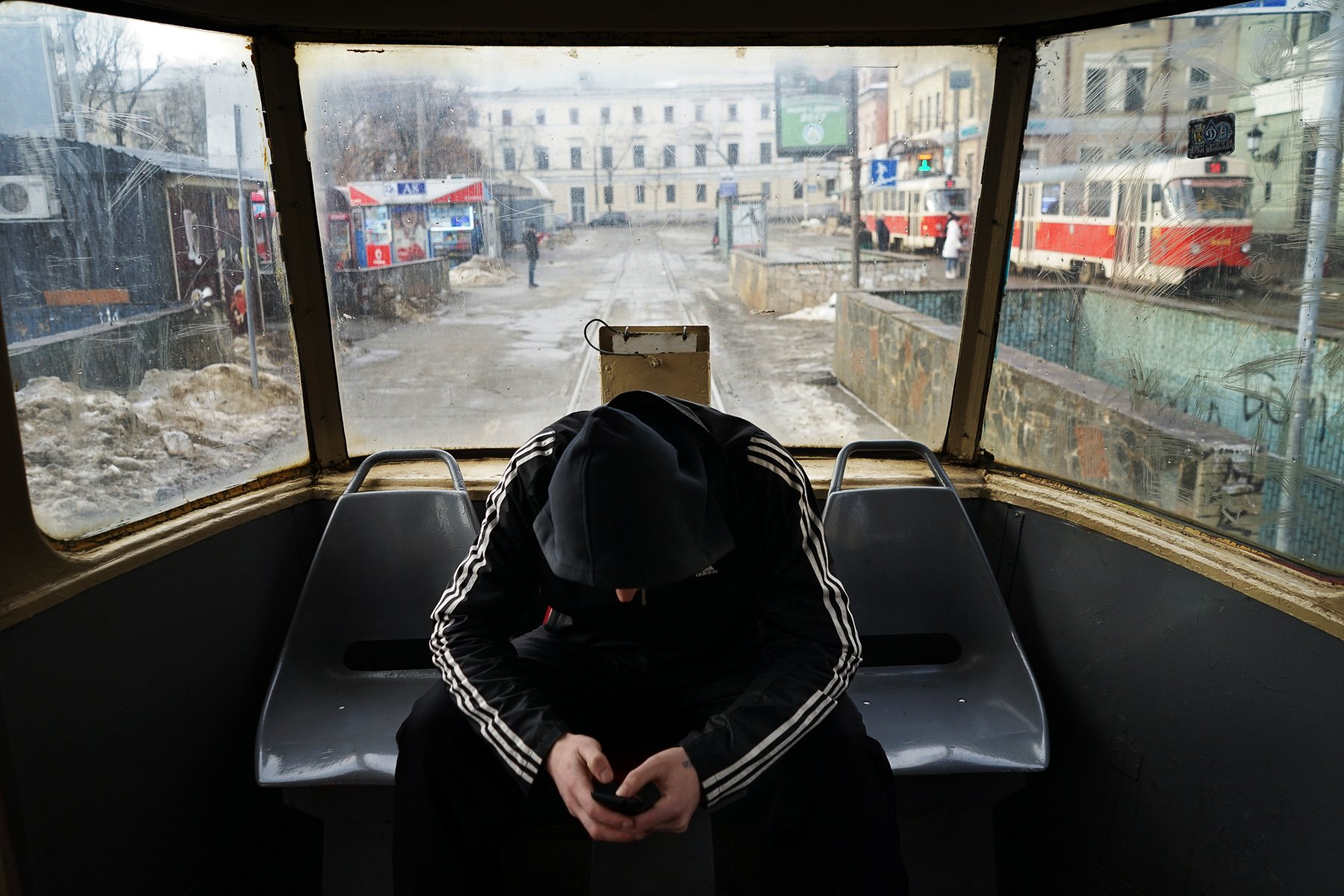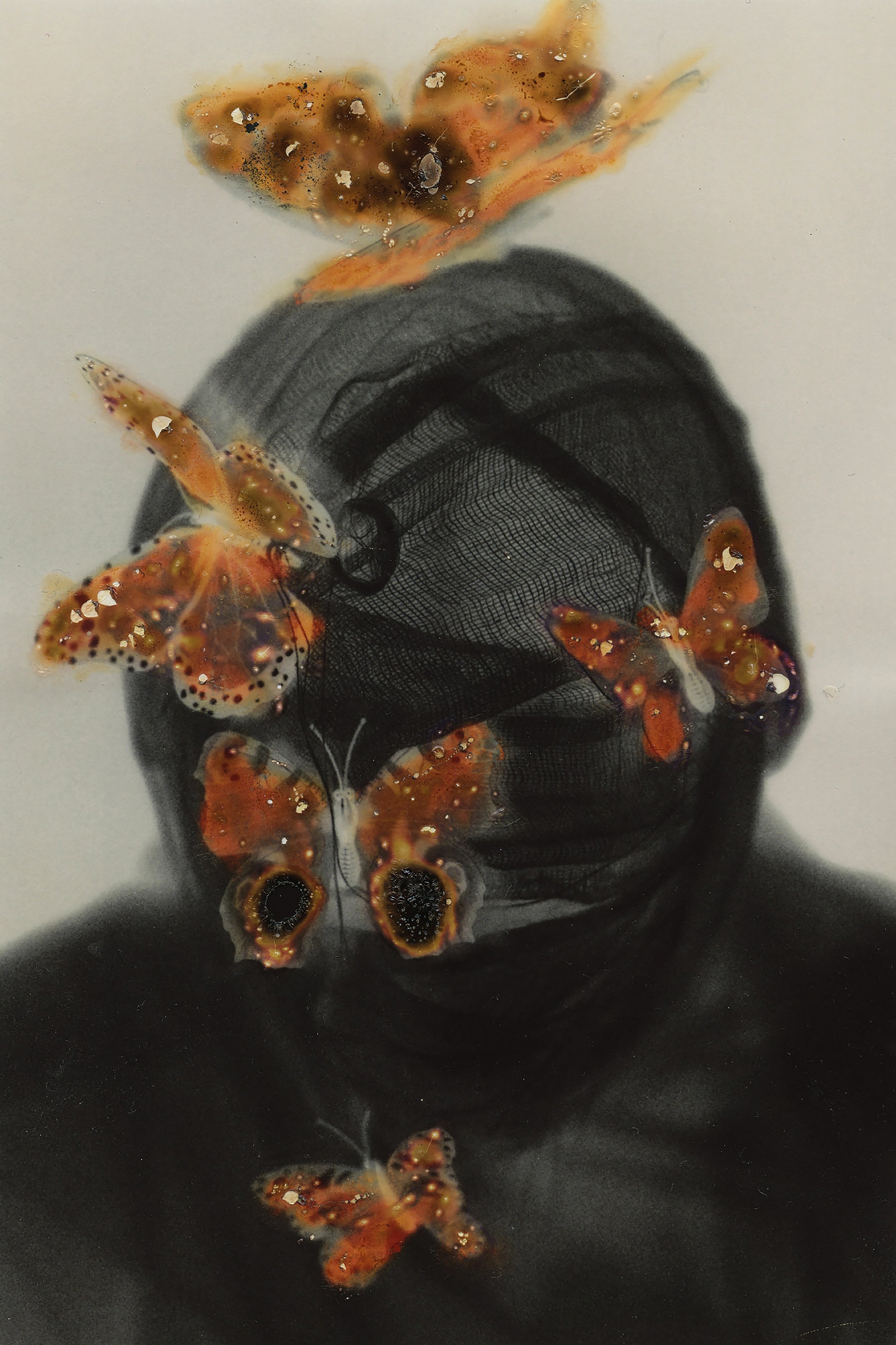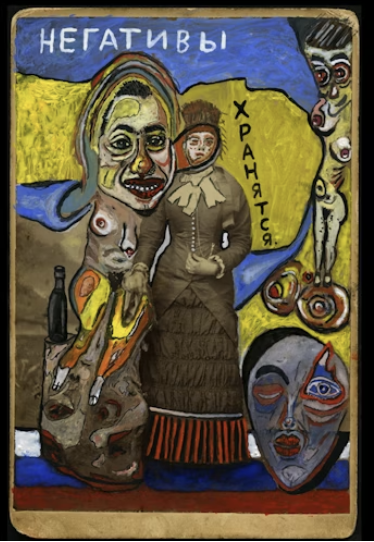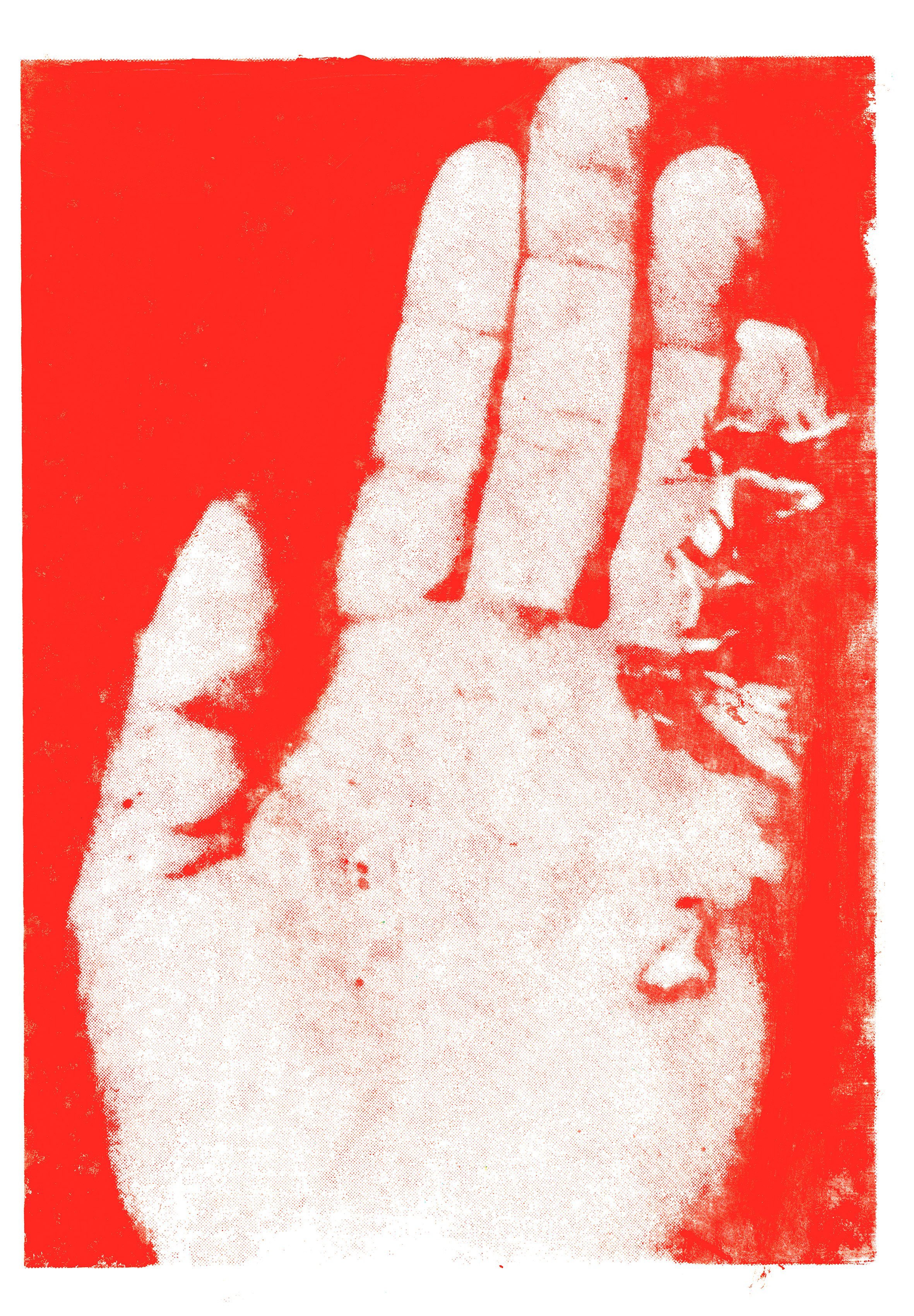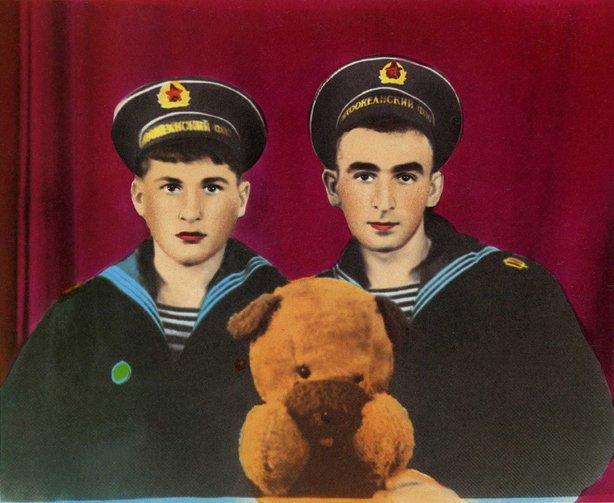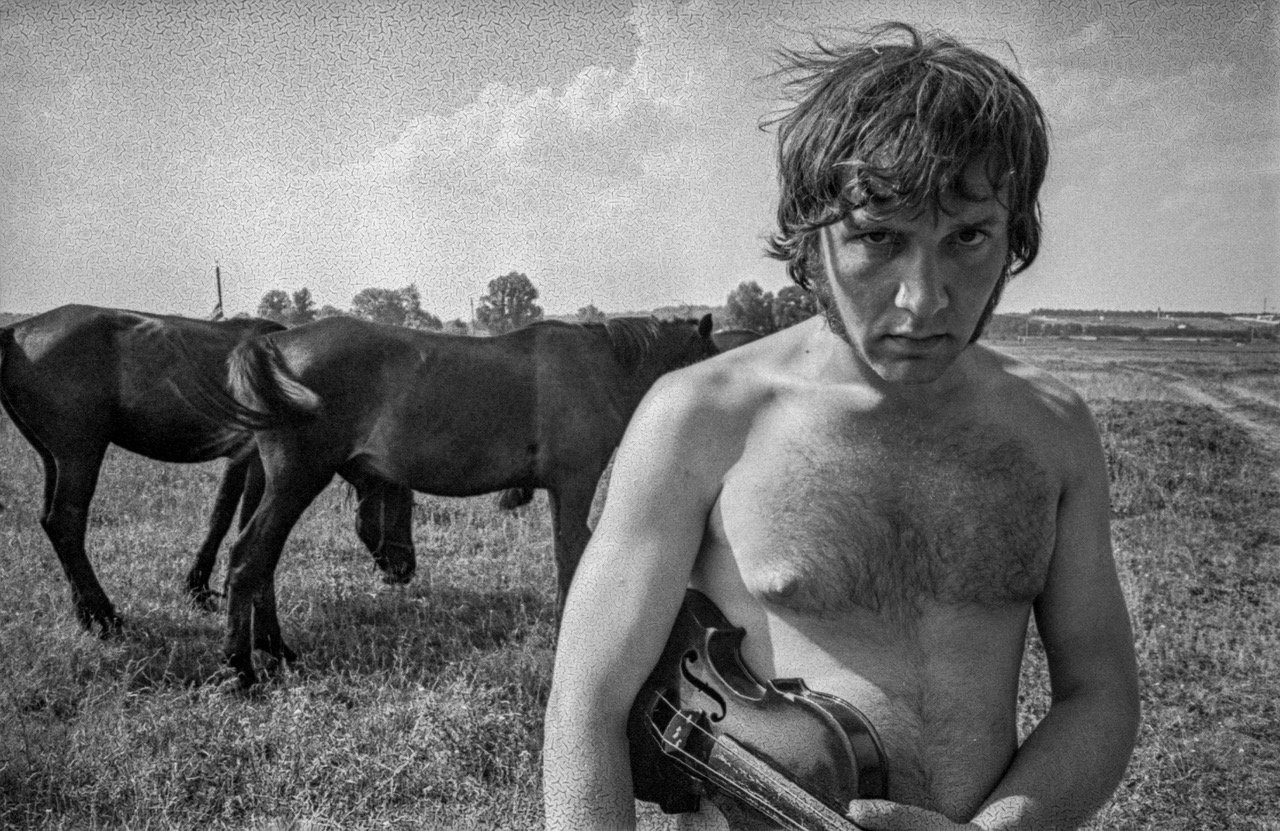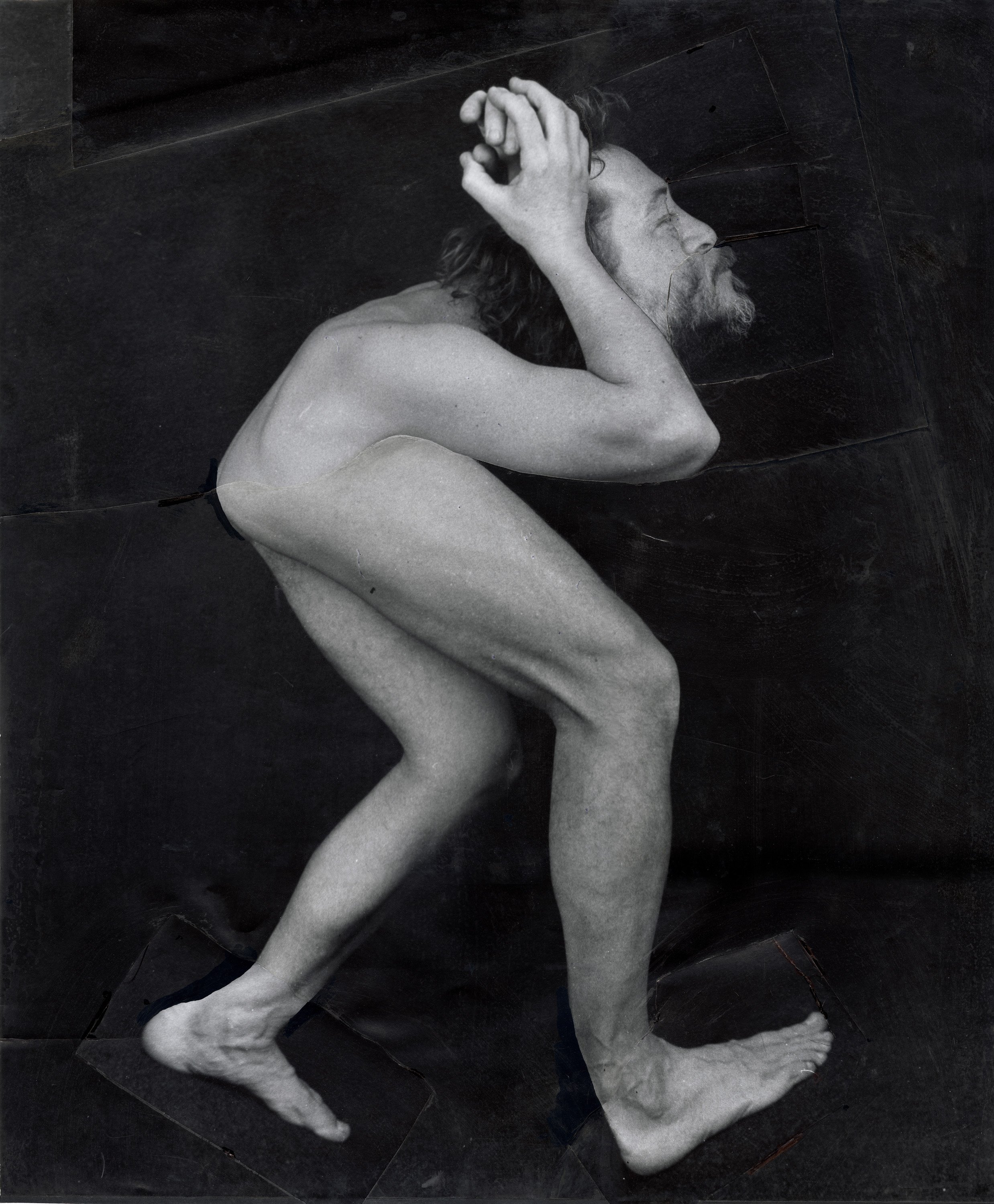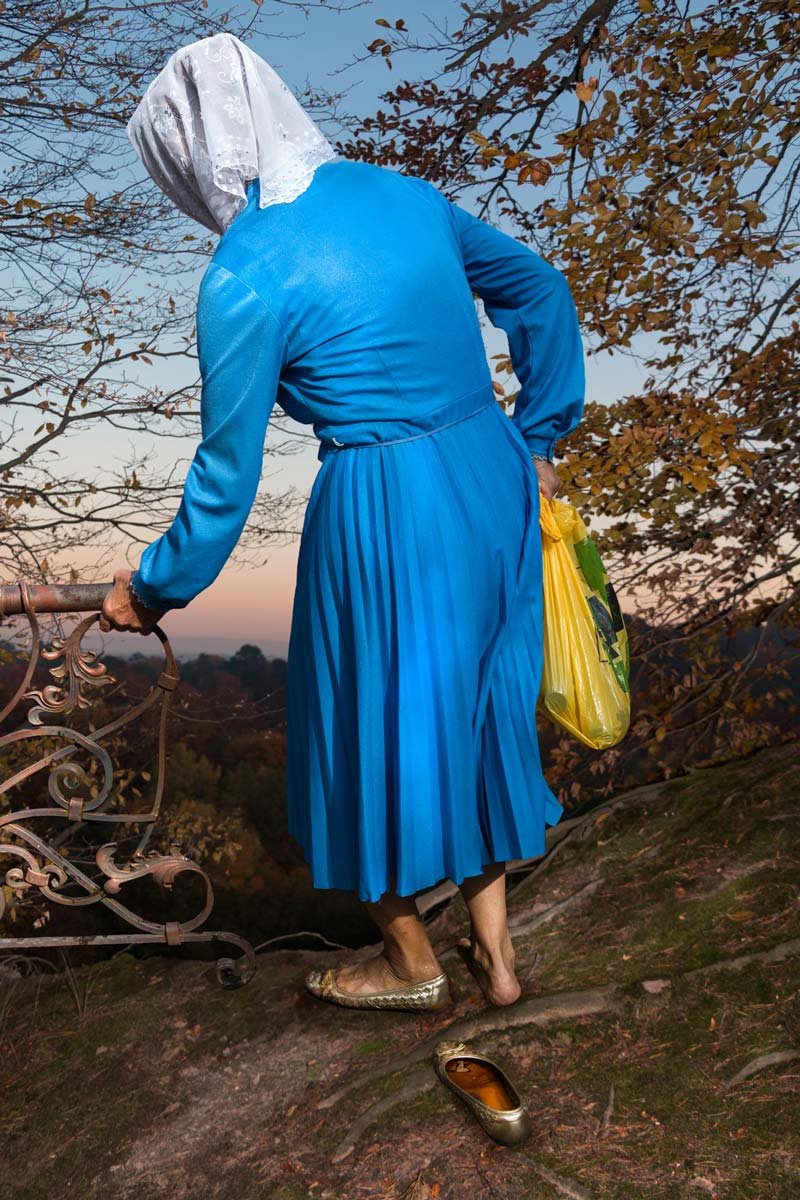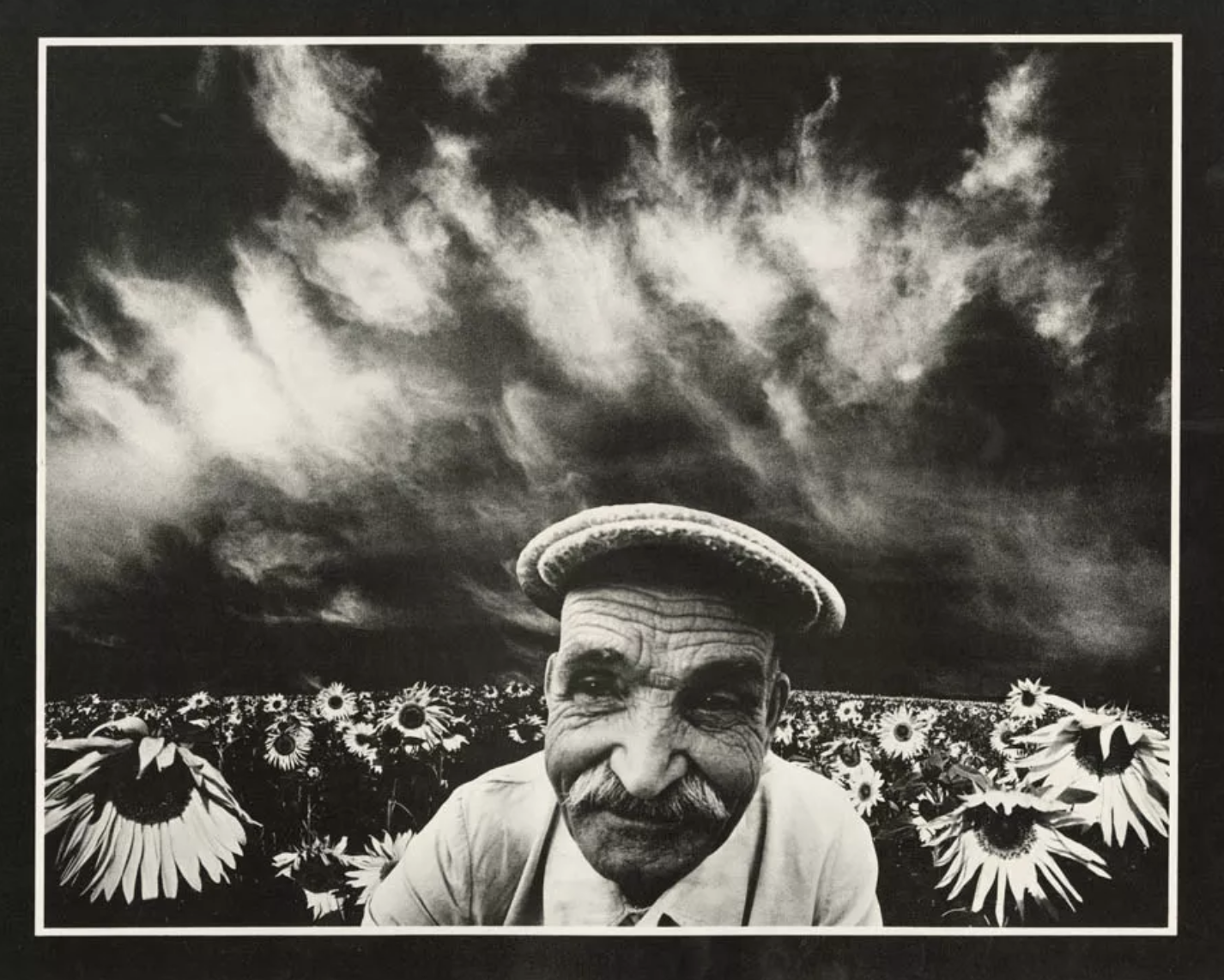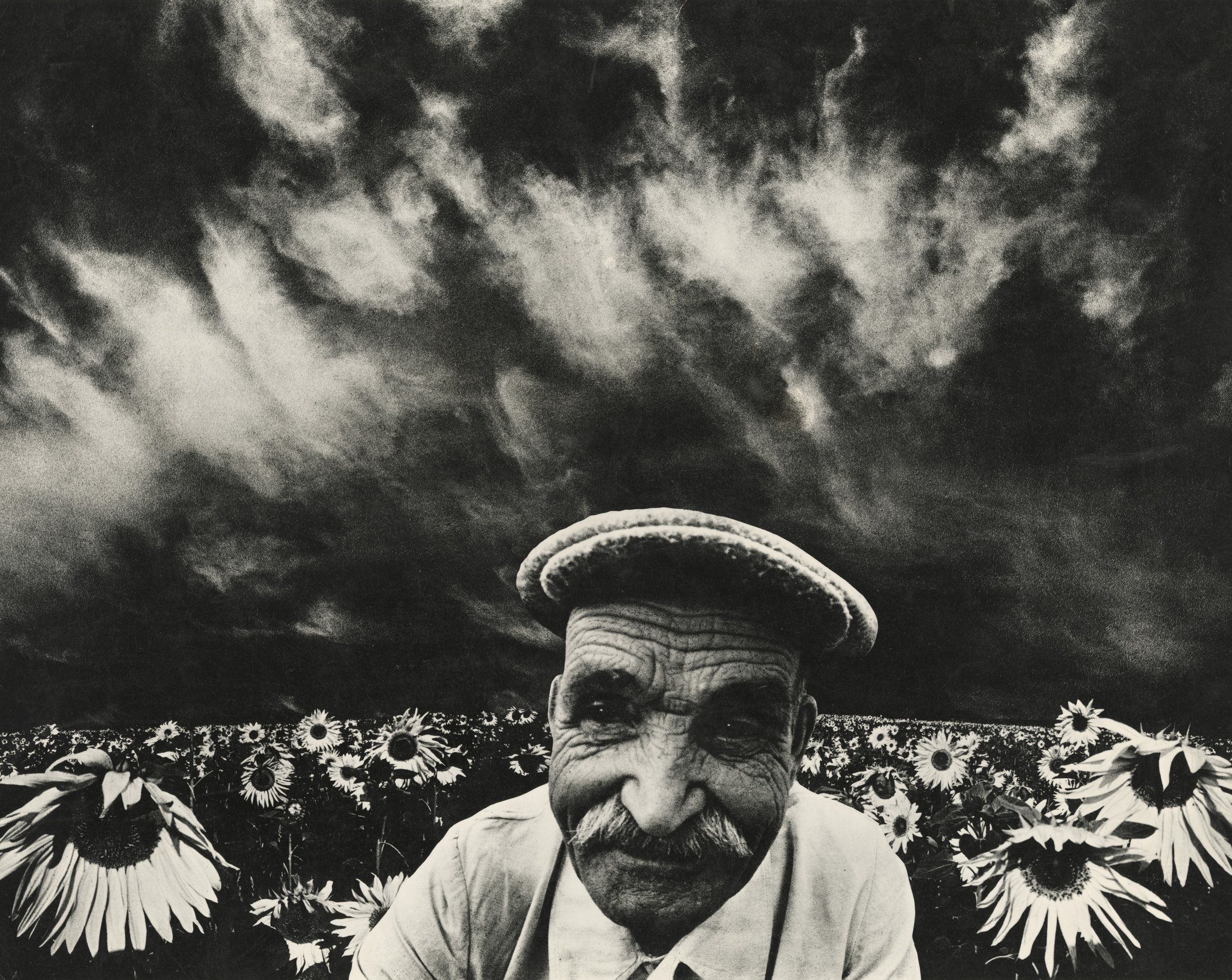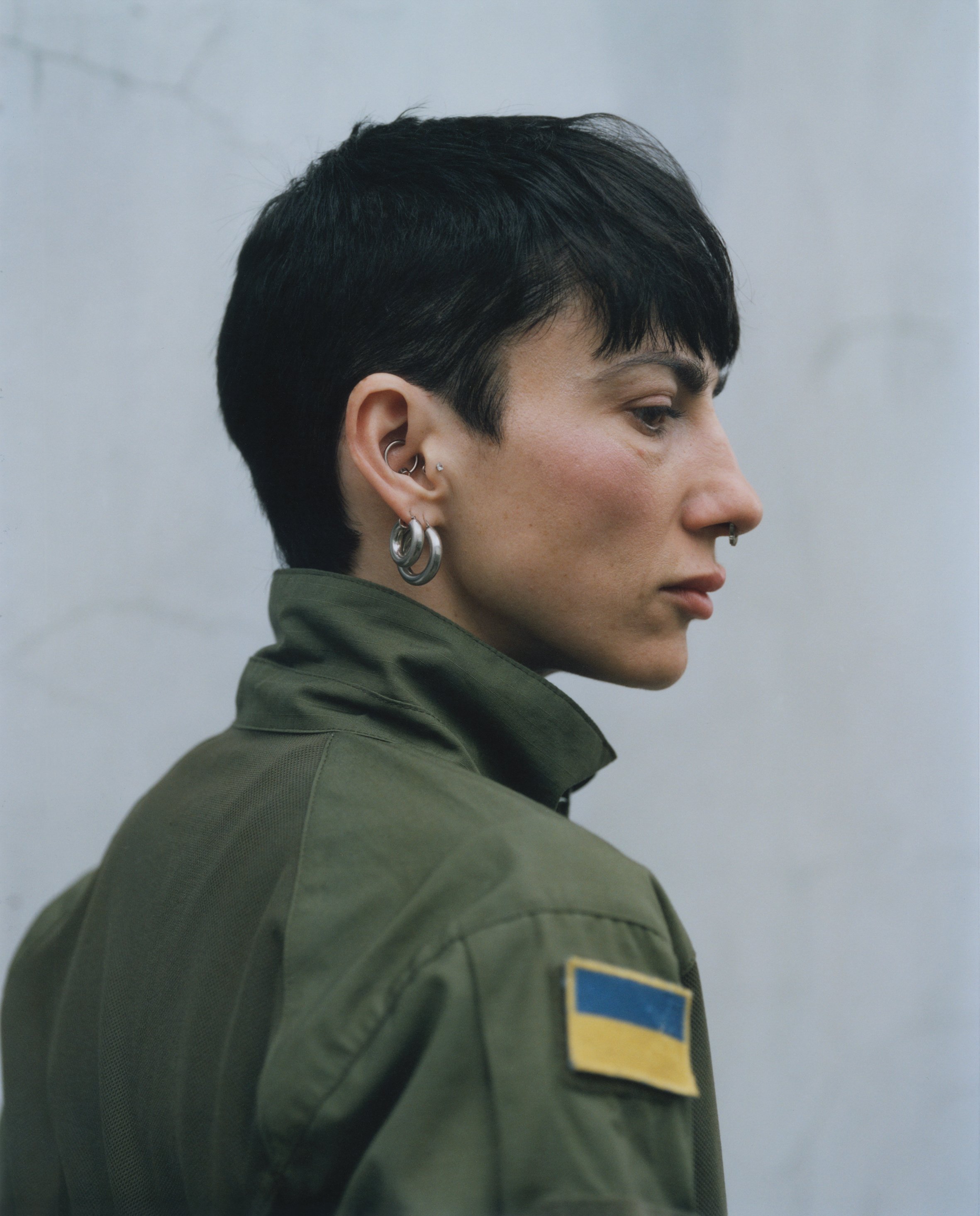
A crew of road workers © Viktor & Sergiy Kotchetov
Generations of Resilience
Exhibition co-curated by the Hangar Team & Kateryna Radchenko
26 January — 23 March 2024
The exhibition shows the challenges, faced by several generations of Ukrainian photographers. Cyclical processes, historical events and unity erase the borderline between these generations. The collection of photos from the 1970s to present, from Boris Mikhailov to young emerging photographers, emphasises the spiral nature of the struggle for Ukraine’s independence and democratic development. The history of Ukraine is a struggle for the future, which continues through generations. Here photography and art become one of the main methods to record and archive changes and one of the ways to fight in the war and resist colonial policy. - Kateryna Radchenko
(Kharkiv, 1951)
Series of gelatin silver prints, late 1970s–1980s
Meeting Boris Mikhailov had a profound impact on Valentyna’s photographic practice, as she started actively exploring the genre of nude photography. The depiction of sensual nakedness was tabooed from the official Soviet imagery as pornographic, even when the images themselves treated the female body not as an object of desire, but as a subject of formal contemplation.
-
Therefore, making nude photography was a completely private, behind-the-door endeavor, in which only a close circle of confidants participated. The featured selection contains some contact sheet, which show an intermediary stage before choosing the images that should be printed. That allows us to peek at the backstage of the creative process that usually remains hidden from the broad audience.
(Kyiv, 1993)
Not Like Us, 2021-ongoing
Not Like Us is a project about growing up and the time it takes. About my ability to visualize memories with others. And about understanding both: my own identity and that of those who will succeed my generation. Everything has changed, but everything remains the same.”
-
2402. War Diary. 2022-ongoing
“Literally. 24.02.2022 when Russia’s full-scale invasion of Ukraine began, the flow of time changed, I realized that I did not distinguish the change of day. Everything merged into one long moment, and I started keeping a diary. Textual and visual. It helped me structure things and my feelings.”
(Luhansk, 1969)
Passport, 1994–1995
As part of a statewide campaign to replace Soviet passports with Ukrainian ones, Alexander Chekmenev joined social workers in visiting hundreds of homes in a district of Luhansk region, taking document photos for the elderly and special-needs people unable to make their way to a studio.
-
The purely utilitarian task grew into a photographic study: he took not just the standard black and white 3.5x4.5 cm shots, but included the incredible poverty of the interiors, using his wide-lens camera loaded with color film. The periphery becomes to the photographer a refuge for a non-retouched truth, the truth of forgotten people: “The small frames of passport photos were like the small frame of Soviet television, which showed propaganda of happy living. But I saw that the real lives of people were not nearly as happy as the press described.”
Citizens of Kyiv, 2022 - ongoing
Almost every discussion on Chekmenev’s photography revolves around two key themes: “empathy” and “memory”. The series Citizens of Kyiv was launched as an assignment for The New York Times Magazine but has quickly surpassed that purpose. The initial task was to photograph the people who stayed in Kyiv under attack during the first month of the invasion, but now the series includes over one hundred images telling the stories of those who remained in the towns and villages of the Kyiv and Chernihiv regions. Alexander Chekmenev recalls that the city was literally empty, and finding protagonists for the series was extremely complicated, so he had to use his contacts to reach out to people. Everyone was photographed in a venue charged with personal meaning. The images are inseparable from the stories behind them, so every composition is accompanied by a caption. What is striking about those captions is the fact that they provide us with accounts not of the victimhood, but of resistance and horizontal cooperation. Citizens of Kyiv is a project about people with an uncertain future. It is created by a photographer, who is himself both the subject and the witness of the war, choosing to stay in Kyiv.
(Slavuta, 1983)
Untitled Project From Chernobyl, 2016-ongoing
In Untitled Project from Chernobyl, Maxim Dondyuk works with vernacular and photographs found in the restricted areas, combining them with landscape photographs of the territories that were burned by nuclear energy.
-
Nowadays, for everyone Chernobyl is associated only with a tragedy at the nuclear power plant and its consequences. But what if we come back to the flourishing times that were so far from the events of 1986? This is where the Untitled project from Chernobyl starts.
BATTLEGROUND, 2022-ongoing
“The series Battleground extends the chronicle of Ukraine’s struggle for freedom I’ve been working on for over a decade. Over these years, I’ve meticulously documented various facets of the conflict between Russia and Ukraine—the Ukrainian Revolution, the annexation of Crimea, and the onset of the war in eastern Ukraine. Through my lens, I’ve depicted the cultural dichotomy between Soviet and European values, as well as the brutal atrocities of war. I never intended to be a war photographer, but this is my homeland, and I feel that I have to capture these historic moments for the present and future generations.”
(Cherkasy, 1987)
Selected works
Presented works are from 2011. They became the result of more than a decade of research and they aim to seize some historic period, which is the time of serious transformation for Ukraine. The ironic but kind of depressed mood of the selected works illustrates the turbulence of this period, and, as we know now, serves as a certain premonition of such a dramatic course of events.
-
FACES OF MEMORY, 2020
This series is dedicated to families who lost their loved ones in the war. Parents, wives, and children of soldiers are depicted in the photographs. They are pictured in the military tunic of the Armed Forces of Ukraine. The tunic is the same for everyone, as a symbol of the country’s common loss. It is the one for all because the tragedy touched not only families but also friends and neighbors, it is a trauma that unites the entire Ukrainian people. The military uniform in the frame reminds us that the war is ongoing.
(1947-2021) & (1972) was a photographic duo of father and son.
Aniline Melancholy series, 1980s-early 2000s, gelatin silver printing, hand colored
Viktor and Sergiy Kochetov portrayed the unadorned (post-)Soviet reality in their photographs, which were far removed from state documentary photography. The artists became known for their hand-coloring, which they applied in the tradition of Luriki.
-
First used as an artistic practice by Boris Mikhailov, Luriki refers to enlarged, retouched, and colored commissioned portraits: “Luriki are infectious! After Luriki series appeared when shooting various events, we didn’t see people in the viewfinders, we saw Luriki, living Luriki”, writes Viktor Kochetov.
(Chernihiv, 2001)
Non-violent changes, 2019-2020
Everything we see is the result of causal consequences that tied hands and create the illusion of free will. We do not choose where to be born, our habits and character are formed from the environment in which we live, floating in the course of life we gather ourselves in parts.
This series of works is about the enslavement with which we were born and the desire for liberation, getting rid of the consequences of not understanding our true “I”.
-
STONE, 2022
Stone is a collective image, a representation of conditions, in which me, my family and people close to me found themselves during the full-scale invasion of Russian occupants. “Slightly larger than the room, it blocks the entrance and reaches the plant on the closet. An existential monument that has no distinguishing features, only the suffocating experience of forced displacement experienced after the February invasion: the crowding of people and animals at train stations, in bomb shelters, temporary housing, fatigue and adrenaline.” - comments by Borys Filonenko. This project was made possible due to support of Lithuanian Culture Council.
(Kharkiv, 1980)
Negatives are Stored, 2011
The title of the series derives from the standard inscription that could be found on the numerous prints of the late 19th–early 20thcentury: “Negatives are stored in the atelier of so–and–so.” This way a client could have potentially acquired the replacement for a lost or damaged image. It’s particularly the fact that a photograph often outlives the memory of a person, who is captured on it, that has been the main trigger to the series. Time turns photographs into empty shells that are mute to us. To give them a second life, Krasnoshchok overpaints vintage vernacular prints he got at the Kharkiv flea market. What can be seen as a brutal and destructive act, for the artist is the gesture of preservation and care.
-
Documentation of War, 2022–ongoing
Despite the comfort and speed offered by digital technologies, Vladyslav Krasnoshchok adheres to analog photography. The artist consciously follows the “subjective reportage” approach of the school. For his works, he uses the lith print technique, which involves working with a developer made from scratch and expired Soviet photographic paper. The resulting prints are unpredictable and tactile. According to the artist, they contain a material dynamic that visualizes the influence of time. The Russian war of aggression prompted Krasnoshchok to document unfolding tragedy and destruction, providing personal insight into the ongoing historical events of his country.
(Kyiv, 1986)
Living With The Fear of Being Harmed by Other Humans, 2020–2021
Living With the Fear of Being Harmed by Other Humans is a series of screen prints of images of mutilated human bodies. This is an attempt to create a body of work that is able to resist and fight against the violence of power, the violence of the state, the cruelty of the modern world, and human violence against humans.
-
Target, 2022-2023, Slideshow, colour, sound, 1min24
“I started creating this series of photos in the late spring of 2022 and continued until the spring of 2023. All the photos were taken in Kyiv through a sniper rifle scope. In this work, I tried to convey the sense of fear and threat that I lived with all this time and tried to cope with. The project includes 50 images.“
(Kharkiv, 1938)
Luriki Colored Soviets Portraits, 1971-1985
Originally in black and white, the photographic series Luriki has been partially or entirely coloured by hand.
-
After selecting photographs found in family albums or photographing his subjects himself, Boris Mikhailov came up with a process of adding colours to negatives, a cynical and ironic imitation of the way Soviet propaganda artificially highlighted the gloomiest events among the proletariat class. With this series, Mikhailov hoped “to speak on behalf of everyone to express the simple truth about the society of our time.”
SOTS ART, 1975-1985
“At the same time that I was making the Luriki series, I began to take social documentary pictures and then paint them using the same aniline dyes. I obtained irony, showing the absurdity of many aspects of our life, or something grotesque. They looked beautiful, and at the same time kitsch. This duality is at the root of my work: taking multiple viewpoints simultaneously. Sots Art is related to American pop art, in that is uses the imagery and meanings of popular mass culture – in this case, ideology.”
SALT LAKE, 1986
Dating from 1986, this series takes us back to Soviet-era Ukraine, on the edge of ruin, to a place where life’s simple pleasures were played out against the backdrop of a lake assailed by industrial pollution on every side. Salt Lake portrays a little-known, almost secret Soviet Union. This is hardly surprising, given that like much of Mikhailov’s work, this series was undertaken clandestinely. The environment is one in which the population appears to be indifferent to its environment, or at least puts up with it for want of anything better, in order to make the most of their freedom, however transient. Did these people have a choice as to where they could relax? Did they wonder about whether there could be anything better anywhere else – or could this freedom be the very best kind of all? Discovering this work today engages us in a work of remembrance – perhaps akin to that of the photographer himself, retracing his father’s steps. One’s attention is irresistibly drawn to the date, one year before the Chernobyl disaster and three years before the collapse of the Soviet system. History has endowed Salt Lake with the status of a valuable testimony, embodying the artist’s perceptive and timeless view of his day.
AT DUSK, 1983
At Dusk, which means at twilight, is a series created in Kharkiv, the hometown of Boris Mikhailov in Ukraine, a territory on its way to independence after the disintegration of the Soviet Union in the early 1990s. Each print in this series, tinted with cobalt blue wash, serves more as a personal narrative of the events than a historical document. “Blue for me is the colour of the blockade, hunger and war...”
In Search of Windows of Opportunity. Exodus, 2020-2021, slideshow, colour, sound, 10min27
In Search of Windows of Opportunity. Exodus is Mikhailov’s most recent work. This unpublished creation is a continuation of his slideshow Temptation of Death (2017-2019), which won the Taras Shevchenko National Prize in 2021 in what was the first official recognition of Mikhailov’s work in Ukraine. He uses the diptych format because, as he says: “it is not possible to explain something with a single image”. It was inspired by a trip Boris and Vita Mikhailov took to a large plastic surgery clinic in Florence in 2017 at the invitation of Dr. Cinzia Luccioli (the daughter of plastic surgery pioneer Cesare Luccioli) to photograph her patients and the surrounding area. “If she wasn’t a doctor, she would be a sculptor,” Mikhailov says. The work juxtaposes these recent photographs with images made over the past ten years in a dialogue between past and present, between the corporeal and the symbolic. In his images of injured, mutilated, and transformed bodies, the artist explores human fragility and questions the definition of beauty.
(Uzhgorod, 1985)
Bilateral Rooms, 2015-2019
“The impossibility of rediscovering an absolute level of the real
is of the same order as the impossibility of staging illusion.”
- Jean Baudrillard
-
Bilateral Rooms series visualizes changeability and delusiveness of political systems symbolized by temporary architectural forms. It recreates dualism of reality through two-days makeshift rooms recreated in a completely identical manner, again and again. Mikhaylo Palinchak has been working for a number of years as the official photographer of the President of Ukraine. The series opens the closed door to the negotiation rooms: minimalist interior with only those things one really needs; colors that don’t draw attention to themselves; it is in this kind of temporary space that representatives of all nations hold crucial conversations, shape the future of millions of people, and develop long-term political strategies.
HIGHLIGHT, 2022-2023
Mykhaylo Palinchak with his photo series documents places of Russian war crimes all over Ukraine such as torture rooms in Kherson, a mass grave in Izum, a basement in Yahidne village, destroyed civilian targets all over Ukraine, looted Kherson Fine Art Museum etc. He also illuminates the cold void that the Russian world brings and leaves behind.
(Kharkiv, 1949)
Violin, 1972
In 1972, Yevgeniy Pavlov created his iconic series Violin — a spontaneous performance that happened in the context of interest in the rock culture of the time, and which resulted in an intense shooting of nude male nature.
-
“In a conversation with a friend, I said that I wanted to take a picture with a naked man standing in the water against the sunset and stretching the accordion. To this, my friend replied that his hippie company was going to the river, and they had a violin. This is where the story of the shooting began, and we shot it in one breath. During the action, one shot seemed to lead a second, and a third, and another, another... Despite all the oddity of the situation, the guys worked with enthusiasm. And maybe that’s why, when the shooting was over, one of them said: “I think we’ve done something serious.” It was in this context that this improvised performance took place.”
TOTAL PHOTOGRAPH, 1994
“Total Photograph is a large block of “color” photographs (black-and-white but embellished with conspicuous bright splotches) that are subject to an analysis that reveals their “true reality.” Digging through photo archives from Soviet times, in Total Photograph Pavlov reveals the mystical subtext of the duplicate Soviet reality, where scenes of “courts of comrades,” party reports, or pioneer marches are reminiscent of scenes of the Last Supper, Judas’s betrayal, or Christ being beaten. We have the pioneer commander handing out weapons to children who, trained in militarism, became the generation that was the bulwark of war under the Soviet empire. The meta-technique of the handmade photograph was a free, uninhibited gesture, significant for the appearance of the “true reality” of photographs that capture daily life during the Soviet period. What do double perspective and the addition of the two, three, or more visual projections that the photograph offers mean? This allows the photographer to remain apart from a negative, unacceptable image of reality. Pavlov began widely introducing painting into black-and-white photography. In relation to the original photographic image, it here plays an atypical, destructive role. This makes Total Photograph similar to various “negative objects” of contemporary art, of which the substance of destruction is an essential given. But these purely photographic losses were compensated for by the parameters provided by painting. The logic of the development of Total Photograph organically led Pavlov to work with a painter, Kharkiv artist Volodymyr Shaposhnikov, with whom he executed the large 1996 project Common Field. They took turns introducing their own colorful “commentary” into black-and-white photos taken by Pavlov.” Tetiana Illushina-Pavlova
(Osipenko village, Berdyansk district, Zaporizhia Oblast, 1957)
Bestiary, 1990s
Like medieval compendiums of fantasy and real animals, after which the series was titled, Solonsky’s Bestiary is inhabited by weird creatures he has designed himself: women with many breasts, hermaphrodites or antique-like sterile torsos without heads or hands. Solonsky envisions corporeality as the collision with the Otherness, which after all occurs as the manifestation of one’s subconsciousness. For him, it was the shelter from the psychological and economic hardship of the 1990s, when the country was in transitional turmoil.
-
Collage interrupts the habitual relations of photography with Time, in which a picture is seen as the recurring reference to an episode from the Past.
(Chervonohrad, 1980)
Grandmothers on the Edge of Heaven, 2019
“In the modern world with rapidly developing technologies, the gap between generations is increasing rapidly. Nowadays, our grandmothers and we are separated not by two generations, but by an abyss. They live with their post-war values, keep their savings in a scarf for a rainy day and procure products for the future.
Regardless of their confessions, grandmothers retell to each other articles about miraculous healings which they had read in newspapers and as evidence that there is life after death. I do not want to mistrust them at all, I only want to hug them and say that there is nothing to be afraid of and they are absolutely right.”
-
HIDDEN, 2022
The series Hidden has sensitivity towards moments of vulnerability as well as shielding from the unwanted gaze. It was created in the spring of 2022 when museum workers and volunteers all over Ukraine rushed to save cultural heritage. All the images were made in Lviv, one of the major artistic hubs of Ukraine. The city is almost 770 years old and has a complex layered history. “Elena’s images are anything but conventional depictions of art pieces. At the same time, the usage of direct flash conveys associations with sensational reportage or crime scene photography, reminding us of the tragic context in which the images were made.” - Olexandra Osadcha, art historian and curator from Kharkiv.
(Berezivka village, Kharkiv Oblast, 1945)
Series of collages, mid-1970s–1980s
Although almost all the photographers of the Kharkiv School of Photography experimented with collage for some time, for Oleksandr Suprun it was the preferred technique. His works differ from the photocollages that were being created internationally at the same time.
-
In contrast to a surreal use of the technique, Suprun uses its possibilities to create a personal and poetic image of his familiar surroundings. Born in a small village near Kharkiv, Suprun grew up in a rural environment. This direct experience is also the subject of his collages, which depict the landscape and village life with its inhabitants. In the Soviet Union, photographing people on the street was a bold act that could be interpreted as espionage and lead to arrest. Oleksandr Suprun thus hid his camera in a shopping bag and used a special device to photograph his surroundings. At first glance, many of his works appear to be ordinary photographs; only at second glance do they reveal a clever montage of photographic props.
(Odesa, 1996)
Temporary homes, 2019-ongoing
“Dormitories are the only type of social housing which exists in Ukraine nowadays. They were constructed during the Soviet era and since that time, buildings and living conditions haven’t changed that much but Ukraine and its people did. In this project I explore the confrontation of the soviet heritage and the new pro-western generation. The buildings which look cold and unified from outside hide diverse rooms that unite soviet interiors and unique belongings, drawings and posters of each student. Dormitories are a kind of cocoon, the place of transition from teenage years to adult life.”
-
Irreversibly Altered, 2022 - ongoing
“I close my eyes and take the journey. My destination is The Land of Grief and Bliss. Once I get there I go to the places I used to know, walk down the streets, see familiar faces, and speak to people. I hope to find my home the same as I left it but all is touched by an ominous feeling. It’s growing bigger and envelops me, it squeezes my chest. I look around and I don’t recognize anything. (…) I see great resilience and bravery while the world around me is collapsing; I hear sirens and explosions; I run and look for a place to hide. There is one between two walls: I sit there and stare in the darkness and the darkness stares at me. The ominous feeling stifles me, I say to myself “Wake-up and it will end”. I open my eyes and the dream continues.” “In this photo series I am both a witness and an actor. During the first year of full-scale war I constantly came back home, trying to capture my new vulnerable reality, the reality which has been irreversibly altered.”
Young Ukrainian photographers
Slideshow, produced by Odesa Photo Days, colour, sound, 8min.
They created visual stories about their own wartime experience in the framework of the mentorship program for young photographers (Odesa, Photo Days Festival, 2022).
-
Anastasia Baklazhko, (2002, Kyiv)
Normal Response to Abnormal Events
“I’m a photographer and a student. I study Art History. I’ve been shooting for more than two years now. My focus is portrait and landscape photography. Sometimes, I also do collage.”
Diana Danyliuk (2002, Chernivtsi)
Shapes of Solitude
“I was born and live in Chernivtsi. I’m completing my studies at the Department of Journalism. I like literature and try to write poetry. I can’t live a day without music and capturing the world on camera. I love travelling. I enjoy and really appreciate my connection with nature, with the authentic local Hutsul culture, home and everything that made me who I am. I try to reflect upon my emotions in the least destructive way - through photography.”
Volodymyr Mateichuk (2003, Kolomyia)
Reliable Home Front
“I live in Kolomyia and study journalism in Lviv. I’ve been into photography for four years now, predominantly documentary. I’m a finalist of Odesa Future Photo Days 2021 and under 21 finalist of London Street Photography Festival 2021. My work was exhibited at Singapore and Reykjavik.”
Tim Melnikov (2003, Odesa)
Living with war
“I’m an Odesa-born Ukrainian photographer. I shoot street, reportage, and architecture. From the first days of hostilities, I’ve been chronicling the effects of the war in Odesa. I study at the Faculty of Journalism of Mechnikov Odesa National University.”
Krystyna Novykova (2002, Mariupol)
Deformation
“Before the war, I studied acting and directing in Kyiv, now I am working on a play in Milan. Cinema, theatre, and photography coexist side by side in my personal space. I try to find balance between not limiting myself to only one thing and being focused and precise in what I do here and now. Sometimes I succeed.”
Volodymyr Shapiro (2003, Lviv - Zolochiv)
Net. Lviv - Kolomyia
“I’m originally from Zolochiv. I live and work in Lviv. I’m interested in documentary photography. I have a bachelor’s degree in political science which I complete with a master’s program in cultural studies.”
Generations of Resilience
22 Ukrainian photographers
-
In a climate of war, Ukraine, the second-largest country in Europe, remains a vibrant scene for artistic creation despite two years of Russian invasion (since February 24, 2022). This exhibition focuses on photography as an artistic practice rather than photojournalism. The medium is here more than ever a means of expression rather than a documentation tool. The paradox is that photos, once they appear and are preserved, become a source of documentation that keeps memory alive. The work of the Museum Of Kharkiv School Of Photography (MOKSOP) is exemplary in this regard. Sheltered in Germany since the beginning of the Russo-Ukrainian conflict, "historical" prints coexist with more contemporary works. This collection has greatly inspired the conception of the Ukraine Exhibition "Generations of Resilience."
An aesthetic affiliation
Generation after generation, Ukrainian artists have fought for their freedom of expression, turning periods of conflict into periods of creativity. The idea is to discover three eras through three generations of artists, the youngest of whom have worked since the beginning of the last conflict, under disastrous conditions. There is a clear lineage between the early works of the "founding fathers" of the Kharkiv School, such as Boris Mikhaïlov, Yevgeniy Pavlov, and those who followed. It is both a "spiritual" lineage due to their emotional and oppositional postures: artists use their practice as a way of expressing their opposition to an ideology, a regime, or a conflict. And an aesthetic lineage. Indeed, faced with common Soviet censorship in the 1970s, a new aesthetic (which is no less impressive than the collages and colorization of images that contemporary photo exhibitions offer us) emerged. It is troubling to see that works created in 2022 often adhere to the same aesthetic and stylistic codes as those created 50 years earlier.
The themes of the Ukraine exhibition
By choosing to show series created before and after the escalation of the conflict, two phenomena are observed in this Ukraine exhibition. On the one hand, creative resilience is palpable. Artists have continued their work at all costs, as they did after the invasion began in 2014. On the other hand, the themes addressed are directly related to war and its consequences on the population, representing a form of therapeutic assimilation of the facts. The artists somehow internalize a collectively experienced event—the state of war—and formally account for it. The intellectual and oppositional underground of the last century has transformed into a lived, domestic underground, as evidenced by images of civilians confined to subterranean shelters, scenes that have become the daily reality for Ukrainians for the past two years.
An Ukraine exhibition to support the artists
As witnesses of their time, Ukrainian artists have formed their own defense: art never dies and carries hope even in the darkest moments. With the Ukraine exhibition,“Generations of Resilience”, Hangar supports them and, through them, all photographers working in war zones around the world. The publication Information Front, produced by the Co-curator of the exhibition Kateryna Radchenko is therefore sold for the benefit of the artists.

